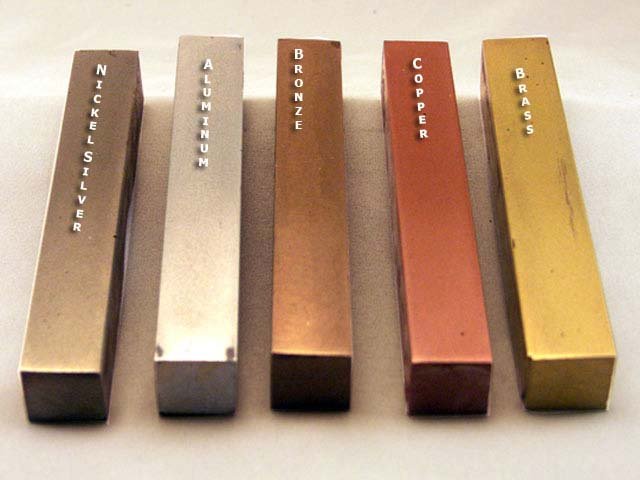Address
304 North Cardinal
St. Dorchester Center, MA 02124
Work Hours
Monday to Friday: 7AM - 7PM
Weekend: 10AM - 5PM
Address
304 North Cardinal
St. Dorchester Center, MA 02124
Work Hours
Monday to Friday: 7AM - 7PM
Weekend: 10AM - 5PM

Welcome to another exciting blog post where we delve into the fascinating world of metallurgy! Today, we’ll be unraveling the mysteries surrounding three popular metals: copper vs brass vs bronze.
These metals have been instrumental in shaping our world and find applications in various industries, from electrical engineering to artistic endeavors. So, let’s dive in and explore the qualities, properties, uses, and comparisons of copper, brass, and bronze.
Now that we understand the fundamentals, let’s delve into the qualities and properties of these metals:
Now, let’s explore the wide range of applications of Copper vs Brass vs Bronze:
Before we jump into the details, let’s first understand the basics. Copper, brass, and bronze are all alloys, which means they are composed of a combination of different metals.
Copper is a pure metal that boasts exceptional thermal and electrical conductivity. It’s malleable and ductile, making it easy to shape and form into various structures.
In its natural state, copper exhibits a beautiful reddish-brown color and offers decent resistance to corrosion.
On the other hand, brass is an alloy made by combining copper and zinc. It inherits copper’s malleability, making it highly pliable and suitable for shaping and forming.
Brass showcases a distinct gold-like appearance due to its zinc content, and its electrical and thermal conductivity are moderately lower compared to copper.
Bronze, yet another alloy, is formed by combining copper with other metals such as tin, aluminum, or silicon. This combination gives bronze exceptional strength and durability, making it ideal for applications where toughness is paramount.
It possesses a brownish color and develops a unique patina over time, lending it an aesthetic appeal.
One question often asked is whether copper, brass, and bronze can be used interchangeably. While these metals share some similarities, their distinct properties make them suitable for different applications.
Copper, with its exceptional electrical conductivity, is unmatched in electrical engineering. Brass, on the other hand, is chosen for its malleability and golden appearance, making it ideal for decorative purposes and musical instruments.
Bronze, with its superior strength and durability, is commonly used in heavy-duty applications such as bearings and gears.
However, there may be certain situations where substitution is possible but not ideal. For example, in some plumbing applications, brass fittings can be used instead of copper, but it’s important to consider factors such as corrosion resistance and compatibility with other materials.
Therefore, while some flexibility exists, it’s best to choose the specific metal that aligns with the desired properties for the intended application.
When it comes to durability, bronze takes the lead. Its strength and toughness make it highly resistant to wear and tear, making it a preferred choice for heavy-duty applications that require long-lasting performance.
Copper and brass, although not as strong as bronze, still exhibit good durability in their respective applications.
In terms of corrosion resistance, copper and bronze have natural protective properties. Copper forms a protective layer of corrosion called a patina, which helps shield it from environmental factors. Similarly, bronze develops a patina over time, offering protection against corrosion.
However, brass is more susceptible to corrosion, especially in marine or acidic environments. Protective coatings or treatments are often necessary to enhance its corrosion resistance.
When it comes to electrical conductivity, COPPER reigns supreme. Its exceptional conductivity makes it the go-to choice for electrical wiring, transformers, and other electrical components.
Brass, while having moderate electrical conductivity, is not as conductive as copper due to its zinc content, which slightly reduces its conductivity.
Bronze, on the other hand, has lower electrical conductivity compared to both copper and brass. Therefore, when it comes to electrical applications that require high conductivity, copper is the metal of choice.
One of the significant advantages of copper, brass, and bronze is their recyclability. These metals can be recycled repeatedly without losing their essential properties, making them sustainable choices.
Copper, being highly valuable, has a robust recycling infrastructure worldwide. Recycling copper not only helps conserve natural resources but also saves energy compared to extracting copper from ores.
Similarly, brass and bronze are also highly recyclable. The recycling process involves melting the alloys down, separating impurities, and reforming them into new products.
Recycling these metals contributes to reducing waste and the need for primary metal extraction.
In conclusion, copper, brass, and bronze are versatile metals that find applications in various industries. Each metal possesses unique qualities and properties that make it suitable for specific uses.
Copper stands out with its exceptional thermal and electrical conductivity, making it indispensable in electrical engineering and plumbing systems.
Brass, a combination of copper and zinc, offers malleability and a gold-like appearance, making it popular in decorative items and musical instruments.
Bronze, formed by combining copper with other metals, exhibits exceptional strength and durability, making it ideal for heavy-duty applications and artistic creations.
While these metals have some overlapping uses, they cannot be used interchangeably in all applications. The choice of metal depends on the specific requirements of the intended application.
When it comes to durability, bronze takes the lead with its strength and resistance to wear and tear. Copper and bronze naturally develop protective patinas, enhancing their corrosion resistance. However, brass is more susceptible to corrosion and may require additional measures for protection.
In terms of electrical conductivity, copper reigns supreme, followed by brass with moderate conductivity. Bronze, with its lower conductivity, is better suited for applications where electrical conductivity is not the primary requirement.
Lastly, the recyclability of copper, brass, and bronze makes them environmentally friendly choices. Recycling these metals helps conserve resources and reduce waste.
So, whether you’re marveling at the electrical efficiency of copper, admiring the golden allure of brass, or appreciating the strength and artistic elegance of bronze, these metals continue to shape our world in remarkable ways.